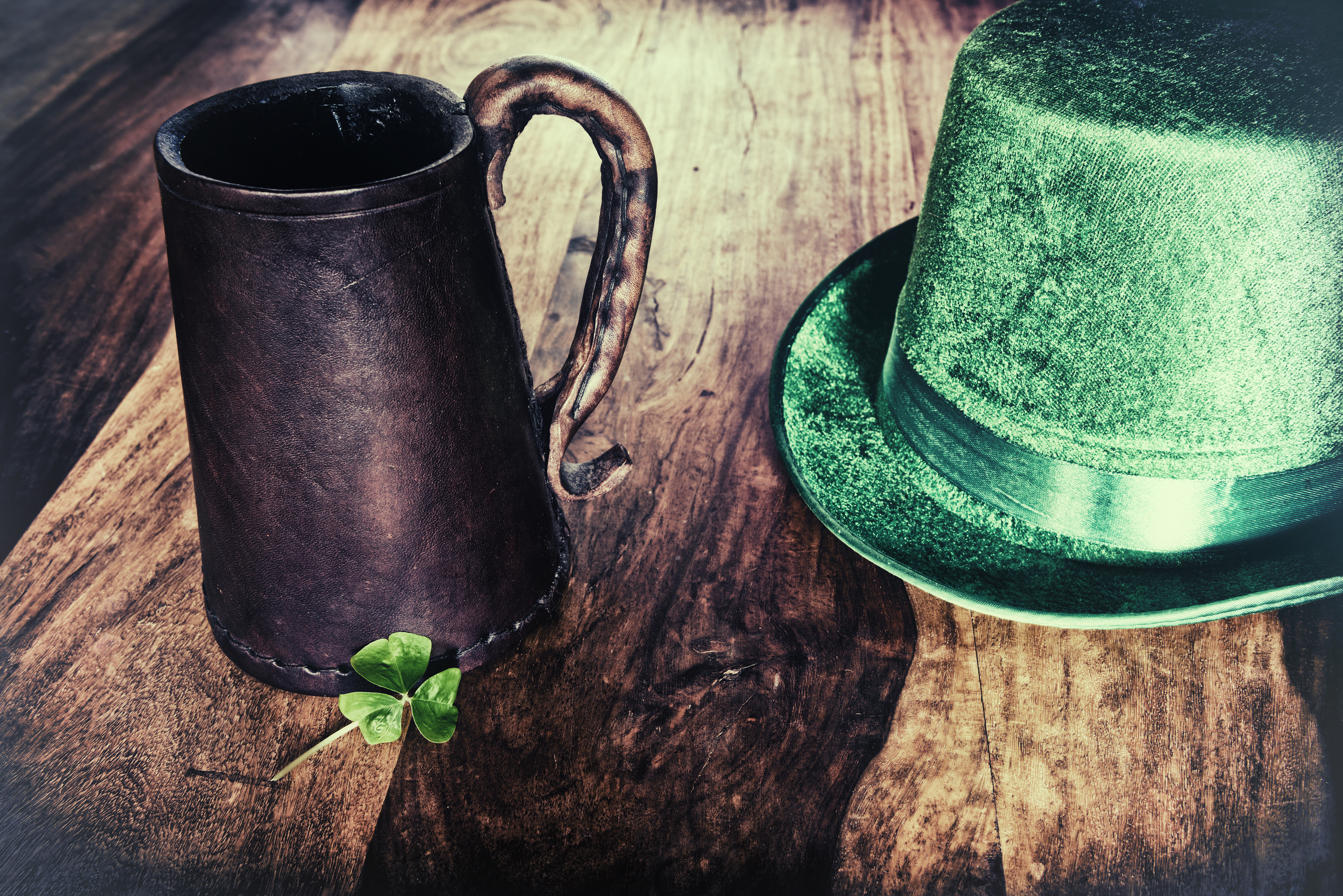The amusing origins of Saint Patrick’s Day
Year after year, huge parades celebrate the big day. No need to have some Irish in your roots to enjoy the festivities, because in North America, on March 17, everyone’s Irish. It’s worth checking out the general beliefs, however, about this Christian-inspired holiday.
First off – and hang on to your hat – Saint Patrick, patron saint of the Irish and Engineers, was not Irish. Born around 380 in Kilpatrick, Scotland, young Patrick was captured by pirates from the east of Ireland at the age of 16. The pirates sold him as a slave in Ireland. He spent six years in captivity working as a shepherd for a cruel Irish clan chieftain. The story goes that one day, an angel appeared to him and ordered him to dig in the ground. The young slave then found the money he needed to buy his freedom. Quite non-religious before his capture, Patrick stated that he had found God during his servitude and became a devout Christian.
The evangelist
For several years, Patrick went to Britain to advance his Christian education. In his forties he returned to Ireland with an evangelical mission. According to legend, Patrick – let’s now start calling

him Saint Patrick — during a sermon at the Rock of Cashel, used a three-leaf clover to try to explain the mystery of the Holy Trinity. The shamrock became ipso facto the symbol of Ireland.
The legend also states that it was at that moment that he chased all the snakes out of Ireland. In reality, these latter represented the Celtic polytheistic beliefs of the time, assimilated into Satan. Each year, the Irish nonetheless wear a shamrock in their buttonhole to remind them of this lesson. After all, who knows…?
And the colour representing Saint Patrick is…blue
It’s true. Several historians agree that Saint-Patrick’s colour is blue and not green. It was only in 1798, during the Irish rebellion – when the shamrock became a symbol of nationalism – that Saint-Patrick’s green made its appearance.
So is it the Irish National Day?
Although it has been celebrated in Ireland since the ninth century in memory of the evangelical monk who died on March 17, 461, Saint Patrick’s Day is not Ireland’s National Day. As a matter of fact, Ireland does not, properly speaking, have a National Day.
Where does Saint Patrick’s Day come from?
Ireland? Nope. Saint Patrick’s Day was born in American cities that had a large population of Irish immigrants. In the 18th century, cities like Chicago, Boston and New York started to celebrate this day to honour Saint Patrick and create bonds of solidarity within their ethnic community.
Glug, glug, glug…
Nowadays, Saint Patrick’s Day is primarily a pretext for blowing off steam, celebrating…and bending the elbow. It is, however, interesting to note that it falls right in the middle of Lent, a forty-day period of fasting and abstinence instituted by the Catholic Church in the fourth century. Until 1961, a law even forced Irish pubs to lock their doors on that day. Hmmmm…. Fasting for Lent, or Saint Patrick’s Day? It’s an agonizing choice. Happy Saint Patrick’s Day!
North America’s five biggest parades
- New York
It dates back to 1762 and remains the world’s biggest and oldest civilian parade, drawing more than two million spectators annually. - Boston
Boston hosts one of the world’s largest Saint Patrick’s Day events. It’s a joint celebration of Irish culture and of Evacuation Day on March 17, 1776. - Chicago
For the Saint Patrick’s Day parade, the Chicago River is tinted green. Here you’ll find, besides the big parade, the small “South Side Irish Parade”. - Savannah, Georgia
It may be surprising, but the Saint Patrick’s Day celebrations here are very lively. - Montreal
The 195th Saint Patrick’s Day parade will take place on the Rue Sainte-Catherine, in downtown Montreal, on March 18 at noon. It’s one of the oldest parades in North America. The first such event was held in 1824.

Guillaume Vincent432 Posts
Rédacteur et journaliste de profession, Guillaume Vincent a fait ses armes au sein de l’agence QMI. Il s’est joint au Tremblant Express en 2014. Promu en 2017, il y assume depuis le rôle de rédacteur en chef et directeur de la publication. / A writer and photojournalist by profession, Guillaume Vincent won his stripes in the QMI agency. He joined Tremblant Express in 2014. Promoted in 2017, he has been editor-in-chief and co-publisher since then.







0 Comments